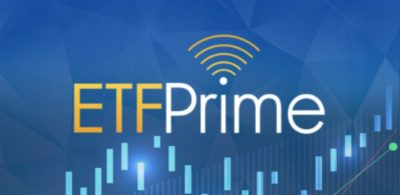In the latest episode of ETF Prime, VettaFi’s chief product and innovation officer Tom Hendrickson and host Nate Geraci discuss advisor concerns regarding the top-heaviness of major indices and highlight ETF segments that stand to benefit including equally-weighted products. Hendrickson also examines low and minimum-volatility ETFs. MIAX’s Tom Jarck goes in-depth on the recently launched ConvexityShares ETFs, which provide long volatility exposure.
The top-heaviness of the S&P 500 has been a lingering concern for investors, with the top 10 holdings making up nearly 30% of the index. The top five names – Apple, Microsoft, Amazon, Tesla, and Alphabet – make up 22% of the index. A full 27% of the index is in the tech sector.
VettaFi took a survey of advisors asking them if they were very concerned, concerned, a little concerned, or not concerned at all about the concentration at the top of the S&P 500, yielding some interesting results. “Very concerned,” or “concerned” amounted to about 70% of the answers. 22% were “just a little concerned.” Hendrickson said, “the lion’s share of respondents are certainly showing some concern as they look at the core of their portfolio construction.” Hendrickson also noted that the level of concentration is at a historic level, and you’d have to go back to 1996 to see similar amounts of top-heaviness.
In 2000, tech was north of 30% of the S&P 500 before the dot com bust. In 2006, financials grew to over 20% of the index, and then that space got bludgeoned. “We’ve certainly seen a run-up in the tech component in a big way, certainly in the last 5 years,” Hendrickson observed, noting that in 2013-2017 only 16-18% was concentrated in tech. The high levels of concentration also create some disparate valuations.
In discussing the size of scale of the biggest company in the S&P, Apple, Hendrickson noted that “the business is so complex, it’s almost a symphony of businesses in and of itself.” Apple might just be one company, but it has an array of businesses within it. There’s a case to be made that these various business models all existing under one roof could make these huge companies diversified plays on their own, though Geraci notes that many advisors “have seen this movie before,” and “know how it ends.” Even if a company is diverse in its offerings, it is still a single company.
Energy once composed 15-16% of the S&P, and that number is down to 5%. Hendrickson said, “you benefit in certain areas from sector outperformance, and then you are going to get pulled back in some areas where you wish you would have gotten more exposure.”
One possible solution is equal weight ETFs like the Invesco S&P 500® Equal Weight ETF (RSP) or the Invesco ESG S&P 500 Equal Weight ETF (RSPE). Low volatility strategies can also act as a counter to concentration risk in the S&P or the Nasdaq (where the top 5 holdings make up 43% of the index and over 50% of the index overall.)
VettaFi tracks investor behavior and Hendrickson noted that the Direxion NASDAQ-100 Equal Weighted Index Shares (QQQE) wasn’t getting a bunch of attention relative to the rest of the Direxion suite until a 300% spike in July and August, indicating a recent surge in investor interest. RSP and RSPE are also experiencing upticks in attention.
According to Geraci, RSP is Invesco’s top ETF this year in terms of flows and has a surprising AUM of $31 billion. As the first mover to utilize equal weighting, RSP underscores some of the benefits of being the first in its space.
Pivoting to low volatility, funds like Invesco S&P 500® Low Volatility ETF (SPLV) and iShares Minimum Volatility ETF (USMV) have both performed well compared to the S&P this year. Low volatility products struggled in the COVID crash but seem to have rebounded soundly. “There’s been significant interest in SPLV,” Hendrickson said, pointing to a 100% increase in research on VettaFi’s platform. He thinks that advisors don’t necessarily always understand how these products work and that both SPLV and USMV might look similar but are quite different once you look under the hood.
Looking at performance, the Invesco S&P 500® High Dividend Low Volatility ETF (SPHD) is only down 1% this year, compared to 17% for the S&P 500.
Long Volatility Enters the Scene
For the second half of the show, Geraci was joined by MIAX’s Tom Jarcks to discuss a pair of recently launched ETFs: the ConvexityShares Daily 1.5x SPIKES Futures ETF (SPKY) and the ConvexityShares 1x SPIKES Futures ETF (SPKX).
Both SPKX and SPKY are built on the SPIKES Volatility Index, which is a measure of the 30-day expected volatility in the SPDR S&P 500 ETF (SPY). “It uses SPDR options as an input to calculate the index,” Jarcks said, noting how SPKX and SPKY are different than other products in the arena. “For that index, what it does, on a SPIKE future expiry date it would hold 100% of its position in the next month SPIKE futures. Then it rolls, on a formula basis, linearly per trading day. Every day the future rolls from the front month future to the next month future.” The SPKY product is a 1.5x, using that same rolling mechanism but with the extra half point of leverage.
Jarck noted that these products are ETFs, not ETNs, meaning they have unlimited creation ability.
“We see volatility moving inversely to equity prices,” Jarck said, noting that there are tactical reasons to go long on volatility, and kick the tires on these funds. Jarck and Geraci cautioned that investors should make sure they understand these tools before using them. MIAX has educational tools available on its website.
Listen to the entire episode of ETF Prime with Tom Hendrickson:
For more ETF Prime podcast episodes, visit our ETF Prime channel.

